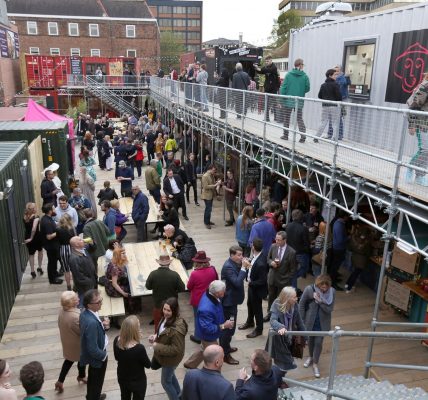Major new development on historic Leeds site given green light
The land where the UK’s largest social housing complex once stood has moved a step closer to redevelopment after planning consent was secured for a major new mixed-use scheme.
St Cecilia Place, in Leeds, will occupy the site of the iconic Quarry Hill flats, which were demolished in 1978. The scheme will comprise 352 build-to-rent (BTR) residential apartments, along with amenity spaces and commercial units.
Consent was obtained by Leeds-based DLA Architecture, working alongside ID Planning, on behalf of client Metropolitan and District Securities (MDS).
DLA’s design includes three interlinked buildings of 19, 20 and 22 storeys, connected by a pair of eight-storey structures.
There will be apartments of varying sizes, and the ground floor public realm will have two courtyards, communal facilities with cycle storage and a residents’ car park. Planning officers said the scheme delivered efficient use of a prime site and would make a valuable contribution to housing needs in the city as well as job creation.
St Cecilia Place forms a critical part of the overall development at Quarry Hill, which links Playhouse Square in the west to Quarry House in the east. Adjacent developments include the mixed-use SOYO scheme, the new Leeds City College building, and the redevelopment of West US Playhouse.
Sue Sparling, director at DLA Architecture, said, “The development will form the final piece of the wider Quarry Hill masterplan, which is known as the cultural quarter of Leeds and includes Leeds Playhouse, the Northern Ballet and Leeds College of Music Auditorium.
“The site is located on St Cecilia Street and through early consultation we established St Cecilia is the patron saint of musicians and therefore, it felt appropriate the development should be known as St Cecilia Place.
“Our design approach recognises the historic building fabric and characteristics of the island site whilst also complementing the more recent developments in the area.
“A significant level of amenity space is incorporated, with large communal roof gardens creating vibrant spaces with far-reaching views of the wider city.
“The building forms create two south-facing landscaped courtyards, along with ecological and visual enhancement of the retained landscape corridor to the north of the site, which is part of the wider Leeds Habitat Network.”
DLA Architecture employs more than 75 people in Leeds, Manchester and London, and has work on other major Leeds developments, including the award-winning office scheme at The Majestic.
It is designing the redevelopment of the former Leeds Technology Campus site, also for MDS, the £270m mixed-use development on the former International Swimming Pool site, and the refurbishment of 12 King Street.










